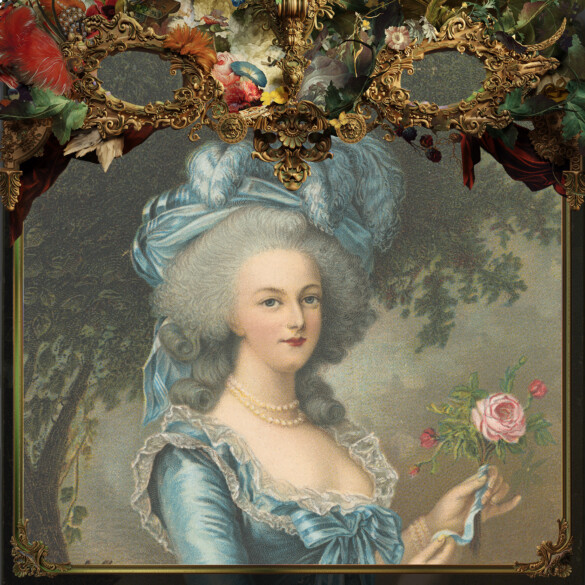“Śródmieście” Community Center in Białystok invites you to the vernissage of the exhibition of objects referring to the history of the carnival “Ticket or fan?”, which will start the 6th Baroque Gardens of Art Festival “Carnival vs Post”.
Opening of the exhibition “Ticket or fan?” will be held on June 16 (Friday) at 18:00 at the “Śródmieście” Community Center in Białystok (exhibition hall, second floor), ul. Jana Kilińskiego 13. Free admission!

The potential of the fan was discovered in the 17th century. The fan reigned in salons, it was a symbol of coquetry and ars amandi. At the court of King Louis XIV of France, fans decorated with bold scenes of morality, whose authors were famous painters, were fashionable, e.g. Jean A. Watteau.
In the 18th century Queen Louise Mirck of Sweden established the Order of the Fan, where ladies could learn the secrets of the cipher and seduce men publicly, but discreetly. The proper arrangement of the fan expressed intentions and feelings. The decorations could also convey confidential information – and thus the language of the fan was born. If the lady, holding the fan in her left hand, touched her right cheek with it, it meant consent and acceptance. Some gestures warned – the fan by the left ear is a message: “attention, we are being overheard.” The fan held to the mouth meant “don’t flirt with that one”, and the lady’s dropping it was a suggestion that the bachelor should approach her. A wide open fan held in front of the face meant “follow me”, moving the fan right in front of the eyes – “excuse me”, quick fanning – a warning that the lady is engaged. There were a lot of gestures and signs. Young ladies from good homes were offered classes to help them master this code.
The language of the fan was not foreign to Polish salons, since in 1823 the Courier for the Beautiful Sex found the following mention: “this new salon telegraph, if you see them leaning towards the floor, approach from the front, because it is a sign that you only care about something they have to ask. And if he rests on some shoulder, try to approach from behind, slightly and without paying attention to the arm of the chair, for they have two words to say in your ear. Leaning lightly on the cushion of a neighboring chair, it is a sign that you should sit down, so hurry to fulfill this request, for you should know that they want to joke with you.”

Therefore, the 19th century was faithful to fans. These aide-mémoires were popular, reminiscent of the words of popular songs, dance routines, game rules, and even excerpts from psalms and prayers. This period in fashion also owes the division into light lace fans, used by young girls, and heavy, richly decorated fans, tailored to the dresses of elegant ladies.
The exhibition will be open until July 17, from Monday to Friday, 10:00-16:00.

